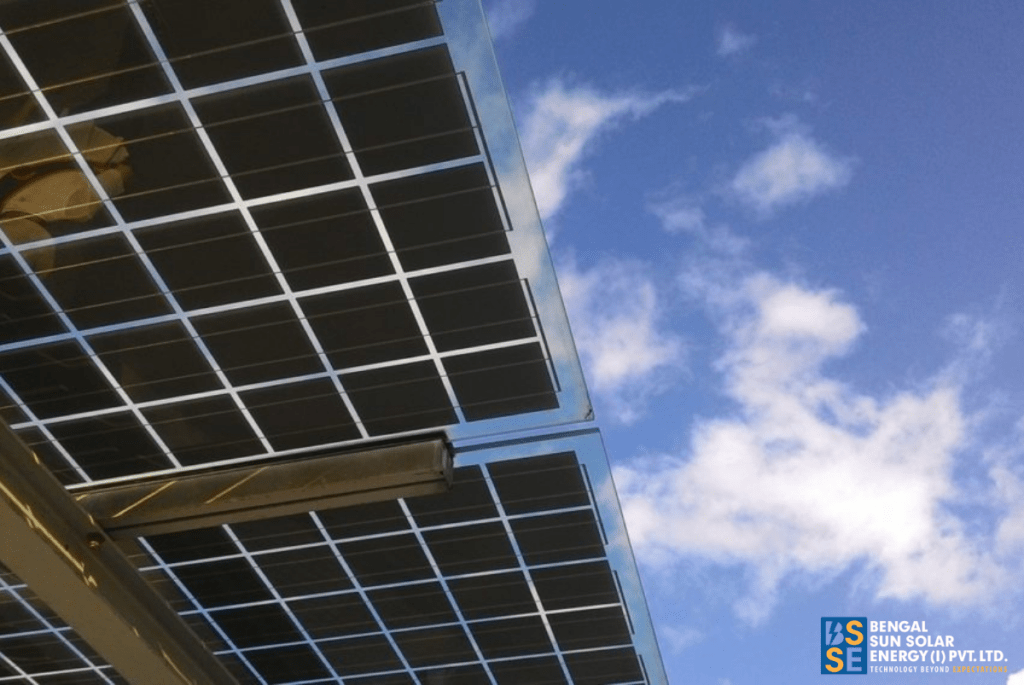Solar energy is crucial to our survival as a species, and thankfully, the industry is booming.
There’s no plan to prevent manmade global warming from permanently warping the Earth’s climate without solar panels and the energy they can convert. “The role of renewable energy solutions in mitigating climate change is proven,” says the United Nations Development Program. Some in the industry think that solar will grow 6,500 percent as an industry by 2050 in order to mitigate that need.
But for all their importance, solar panels still feel mysterious. Stiff and slightly menacing black rectangles, they have neither the look nor the feel of a savior. Majestic waterfalls and dams look heroic, but solar panels do not. So what are their inner mechanisms, how do they work?
A Brief History of Solar Panels
Work in solar energy began in 1839, when a young French physicist named Edmond Becquerel discovered what is now known as the photovoltaic effect. Edmond was interested in how light functioned, and when he was just 19, he found that electricity could be produced through sunlight.
How Do Solar Panels Work?
To understand how silicon solar panels make electricity, you must think down at the atomic level. Silicon has an atomic number of 14, which means it has 14 protons in its center and 14 electrons circling that center. Using the classic imagery of atomic circles, there are three circles moving around the center. The innermost circle is full with two electrons, and the middle circle is full with eight.
However, the outermost circle, which holds four electrons, is half-full. That means it will always look to fill itself up with help from nearby atoms. When they connect, they form what is called a crystalline structure.
With all those electrons reaching out and connecting to each other, there isn’t much room for an electric current to move. That’s why the silicon found in solar panels is impure, mixed in with another element, like phosphorous. The outermost circle of phosphorous has five electrons.
That fifth electron becomes what is known as a “free carrier,” able to carry an electrical current without much prodding. Scientists boost the number of free carriers by adding impurities in a process called doping. The result is what’s known as N-type silicon.
N-type silicon is what’s on the surface of a solar panel. Below that resides its mirror opposite—P-type silicon. Whereas N-type silicon has one extra electron, P-type uses impurities from elements like gallium or boron that have one less electron. That creates another imbalance, and when sunlight hits the P-type, the electrons starts to move to fill the voids in each other. This is the balancing act that repeats itself over and over again, generating electricity.
Solar Panels Today
Nowadays, photovoltaic cells are mass-produced and cut by lasers with greater accuracy than any scientist at Bell Labs could have imagined. While they’re used in space, they’ve found far more purpose and value on Earth. So instead of putting an emphasis on weight, solar manufacturers now put an emphasis on strength and durability. Goodbye lightweight encapsulate, hello glass that can withstand the weather.
One of the main focuses on any solar manufacturer is efficiency—how much of the sunlight that falls on every square meter of the solar panel can be converted into electricity.
So, where do we go from here?
The Future of Solar
Some scientists are working on using new materials. There’s a mineral known as Perovskite that is described as “very exciting.” First discovered in the Ural Mountains in western Russia, Perovskite has raised eyebrows testing —from 10 percent efficiency in 2012 to 20 percent in 2014. It can be made artificially with common industrial metals, making it easier to find, and it uses a simpler process than the balancing dance of P and N type silicon to conduct electricity. The technology is still in its earliest phases. While Perovskite has shown great progress in clean environments, it has shown rapid declines when introduced to elements like water, which it could encounter in daily use.
These are some of the technical facts that come from Bengal Sun Solar (I) Pvt Ltd, as a pioneer in the commercial solar panel manufacturers. Their endeavors and constant development have made them the best solar panel manufacturers in West Bengal and by far they are the finest top solar panel manufacture in Kolkata.
